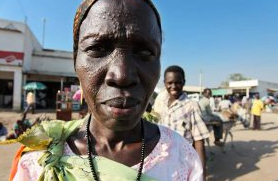The World Food Program and the UN Food and Agriculture Organization sent a fact-finding team to South Sudan last month to examine the state of food security in the world’s newest country. They published their findings today and, well, the situation is growing increasingly dire.
The FAO-WFP report found that the number of food-insecure people in the country jumped from 3.3 million in 2011 to 4.7 million in 2012. Of those, about one million are severely food insecure compared to 900,000 in 2011.
If conflict continues to force people from their homes and food prices keep rising, the number of people who are severely-food insecure could double, the report says.
“This is a rapidly approaching crisis that the world cannot afford to ignore,” said Chris Nikoi, WFP’s country director in South Sudan. “The situation is dire, and we are doing everything we can to be ready, but we are running out of time.”
Harvests and markets
According to the assessment, South Sudan’s cereal harvest in 2011 was 19 percent smaller than in 2011 and 25 percent smaller than the five-year average. This year, farmers in South Sudan grew just over half the amount of grain the country will need to feed itself.
Poor rainfall was largely responsible for the lower harvest, together with conflict which pushed farmers off their land and prevented them from tending to their fields. The fall in supply coincided with a rise in demand as many families living across the border in Sudan have begun returning home.
Ordinarily, food markets would help to fill the gap. But closed border crossings between South Sudan and Sudan have disrupted the flow of food.
Trade with other neighbouring countries has helped, but poor roads, expensive fuel and high inflation have combined to push up food prices for the people of South Sudan.
The WFP says it needs to cover a $160 million shortfall to reach 2.7 million people with emergency food aid. The FAO, meanwhile, says it needs $23 million to support agricultural production in South Sudan to help mitigate future crises.
